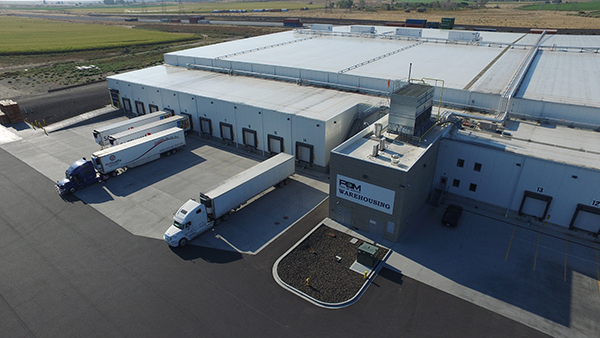Temperature-controlled warehousing and storage facilities play a crucial role in preserving and maintaining the quality of temperature-sensitive goods, such as food products, pharmaceuticals, and other perishable items. In the state of Wisconsin, there are several well-equipped facilities that offer cold storage, refrigerated warehousing, climate-controlled warehousing, and frozen storage solutions. In this article, we will explore these different types of warehousing options available in Wisconsin and discuss their importance for various industries.
- Cold Storage Warehousing:
Cold storage warehousing facilities in Wisconsin are designed to maintain low temperatures, typically below 50 degrees Fahrenheit, to preserve fresh produce, dairy products, and other perishable items. These facilities use advanced cooling systems, such as blast freezers and cold rooms, to ensure the efficient preservation of goods. The cold storage warehouses in Wisconsin cater to a wide range of industries, including agriculture, food processing, and pharmaceuticals.
- Refrigerated Warehousing:
Refrigerated warehousing facilities in Wisconsin are similar to cold storage warehouses but typically maintain higher temperatures, typically between 33 and 55 degrees Fahrenheit. These facilities are ideal for storing fruits, vegetables, meats, and other temperature-sensitive products that require a controlled refrigerated environment. They are equipped with sophisticated temperature control systems to maintain a consistent temperature throughout the storage area.
- Climate-Controlled Warehousing:
Climate-controlled warehousing facilities in Wisconsin provide a controlled environment for storing goods that are sensitive to temperature variations and humidity levels. These facilities are often used to store items such as electronics, fine art, wine, and pharmaceuticals. Climate-controlled warehouses utilize advanced HVAC systems and dehumidifiers to regulate temperature and humidity levels, ensuring the preservation of sensitive goods.
- Frozen Storage Warehousing:
Frozen storage warehousing facilities in Wisconsin are designed to maintain extremely low temperatures, typically below 0 degrees Fahrenheit, to preserve frozen food products, ice cream, and other frozen goods. These facilities utilize specialized freezing technologies, such as blast freezers and spiral freezers, to rapidly freeze and store products at sub-zero temperatures. Frozen storage warehouses prioritize the quick freezing and safe storage of perishable goods to maintain their quality and extend their shelf life.
Importance and Benefits:
The availability of temperature-controlled warehousing facilities in Wisconsin is crucial for several reasons:
- Quality Preservation: These facilities ensure that temperature-sensitive goods are stored in optimal conditions, preserving their quality, taste, and nutritional value.
- Extended Shelf Life: Cold storage, refrigerated, and frozen storage warehouses help extend the shelf life of perishable products, reducing waste and enabling longer distribution cycles.
- Food Safety: Temperature-controlled storage facilities adhere to strict food safety regulations and standards, minimizing the risk of spoilage, contamination, and the growth of harmful bacteria.
- Industry Support: These warehouses provide reliable infrastructure for various industries, including agriculture, food processing, pharmaceuticals, and manufacturing, enabling them to store and distribute their products efficiently.
Conclusion
Temperature-controlled warehousing facilities, including cold storage, refrigerated, climate-controlled, and frozen storage warehouses, play a vital role in preserving the quality, safety, and shelf life of temperature-sensitive goods. In Wisconsin, these facilities cater to a wide range of industries and ensure that perishable products are stored in optimal conditions. The availability of such facilities supports local businesses and contributes to the overall supply chain efficiency and food safety in the state.


 Dave McGowan has been a member of the WEL Family since May 1989. He is a husband and father of two children. Dave is also a U.S. Army veteran and served in Vietnam in 1971-1972, and he attended driving school soon after he was released from the military in 1974.
Dave McGowan has been a member of the WEL Family since May 1989. He is a husband and father of two children. Dave is also a U.S. Army veteran and served in Vietnam in 1971-1972, and he attended driving school soon after he was released from the military in 1974. During his career with WEL, Phil has worked as a driver, dispatcher, terminal manager and customer service manager. He says he always was a driver first, though non-driving jobs taught him financial management that helps him as an owner-operator.
During his career with WEL, Phil has worked as a driver, dispatcher, terminal manager and customer service manager. He says he always was a driver first, though non-driving jobs taught him financial management that helps him as an owner-operator.